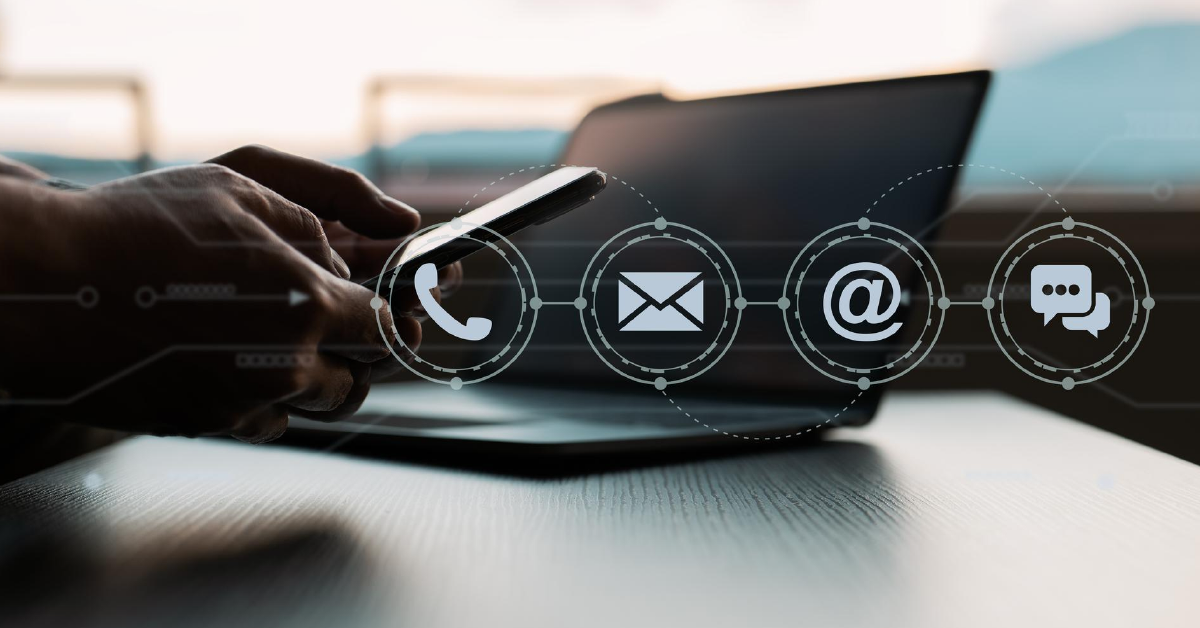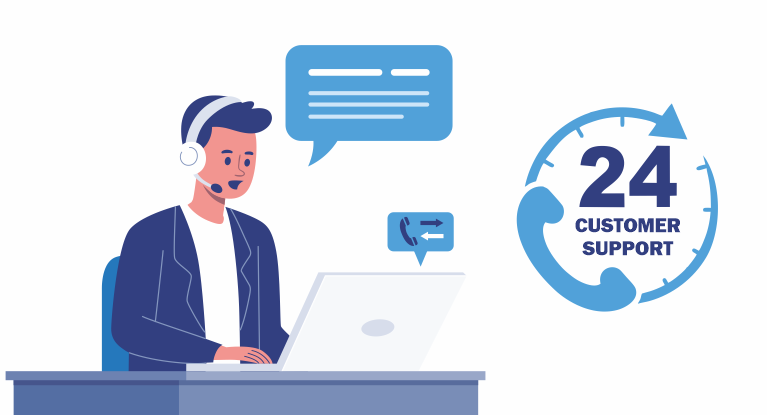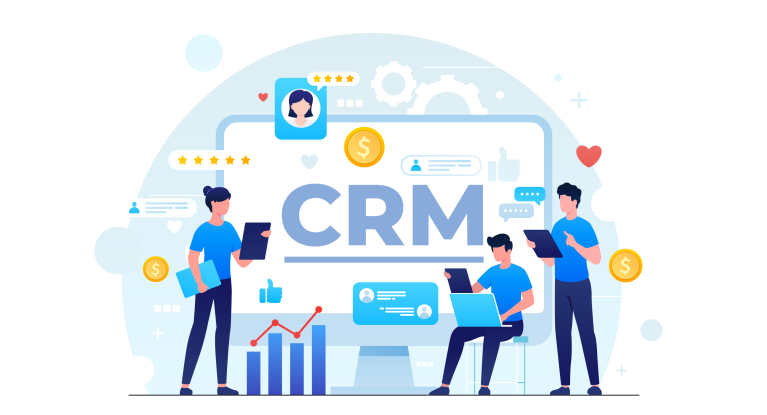Mobile-First Omnichannel Customer Service

4 min read
With the increased popularity of smartphones and social media, mobile-first omnichannel customer service is now essential to doing business.
Omnichannel customer service has become increasingly important to companies looking to integrate all aspects of customer communication and stay competitive in a rapidly changing market. With the increased dependence on technology, it’s no surprise that consumers are demanding more than just brick-and-mortar transactions.
Mobile applications for business communications have given customers instant access to information anytime, which is difficult for businesses that need a robust mobile strategy. It is a growing trend in marketing. Mobile-first provides a more seamless experience for customers and offers an opportunity for increased revenue through increased digital engagement and customer retention.
Mobile-First Omnichannel Customer Service Entails:
1. Omnichannel Integration:
In a mobile-first strategy, the customer service experience is seamless, regardless of which devices customers use to connect with a brand. It means ensuring connectivity between each channel and device so customers can contact a brand through their preferred channel and receive relevant answers.
2. Personalization:
Personalized customer service ensures that each customer receives the information or solution most helpful for their unique situation. Personalization in mobile-first omnichannel customer service involves collecting data across all channels to understand each customer better and provide them with the best experience possible on any device.
3. Multichannel Communication:
Customers can now experience more communication channels from enterprise business phone systems, such as email, alongside newer forms of mobile applications for business communications. Mobile-first omnichannel customer service combines the best of both worlds to ensure customers receive the information they need in the most convenient channel.
4. Artificial Intelligence:
AI provides intelligent customer service solutions that can improve efficiency and effectiveness across platforms, devices, and channels. Artificial intelligence constantly evolves to advance through machine learning and natural language processing (“NLP”). It can provide a seamless customer experience and assist agents with decision-making by offering real-time recommendations based on interactions with customers.
5. Enhanced Customer Experience:
The strategy provides enhanced customer experience, defined as the superior feeling associated with a product or service. The customer experience is also influenced by the experiences directly involved with the product or service – for example, its visual appearance, touch, sound, and smell.
6. Increased Revenue:
Mobile-first provides an opportunity for increased revenue through increased digital engagement and customer retention. This is especially true in an omnichannel customer service strategy, where data can be collected across all channels to create a more personalized experience for the customer. Some reports suggest customers with a customized experience are seven times more likely to buy again.
Real-time Communication:
Mobile-first customer service is dependent on real-time communication tools. These include live chat, real-time SMS or social media messaging, and personal digital assistants such as Siri and Cortana.
Personalized Merchandising:
As more retailers embrace mobile-first customer service, they can use this strategy to create customized merchandising. Retailers can send push notifications to customers when they are near a store or an item that matches their preferences. Customers can then browse these items and place orders directly from their smartphones without going to the physical location.
Get Small Business Phone Services. Effortless. Economical.
Business in Minutes with Unified Communications
Mobile Data Analytics:
Retailers will use mobile data analytics to gain insights into customers’ shopping habits. They can use this data to improve their product offerings, marketing campaigns, and overall customer experience.
Integration With Supply Chain:
Integration of the mobile channel is also critical as more business processes migrate to mobile devices. Companies must integrate these tools with their supply chain management systems and inventory tracking, among others, to increase efficiency and reduce costs.
Customer Service Strategies:
Retailers will choose from several customer service strategies when using a mobile-first approach. These strategies include optimizing existing tools by incorporating mobile design features, creating separate apps designed for mobile screens, offering additional features on existing apps through upgrades or plug-ins, and creating new apps exclusively designed for mobile screens.
Benefits Of Mobile-First Omnichannel Customer Service:
- Use the real-time communication channels that customers want (e.g., SMS, chat)
- Personalize messages and offers based on a customer’s preferences and previous shopping history, including items they have viewed online but not yet purchased, their current location, and their demographic information.
- Provide customers with real-time, relevant information by leveraging mobile data analytics to make sense of customer behaviors and preferences. This also enables businesses to recommend products that match customers’ needs.
- Give customers the tools to shop using touch-based functionality from any device (PC or mobile), including those with small screens such as wearables. This creates a consistent experience across all devices used to shop online.
- Simplifying customer communication across channels and devices.
- Responding to customers’ inquiries with ease.
- Bending the rules of traditional business phone systems.
Mobile-first companies must invest in several strategies to develop omnichannel strategies that work for them. These include:
Companies will also need to invest in several technologies, including:
SMS: A messaging platform delivered via mobile networks. SMS is often used as a primary communication between retailers and customers.
Customized Customer Service Applications (CSA): Mobile app for business communications explicitly designed for a retailer’s customers. These are typically built using HTML5 frameworks and can have features like self-service, case management, and chat tools for live support.
SIP trunk: SIP trunk service providers offer various communication modes, such as email, live chat, text, or audio messaging in the digital communication era.
Significant challenges:
Users may have different expectations of when to expect a response on any given channel. In today’s always-on world, customers expect fast and immediate responses from businesses they interact with daily, even when working from home or on the go. This means companies must build their omnichannel strategy around mobile-first. Multiple channels of communication can quickly become overwhelming for the customer. It’s essential to create a company-wide policy to determine which channel a customer uses to reach out and which will be the designated channel for communication. For example, customers can use email to contact customer service but should always receive a response via telephone—messaging apps. Messenger is appropriate for sending photos or videos, but long text conversations should be handled via phone calls or email exchanges.
The rise of messaging apps has made it more difficult to separate the personal from the business conversation. Private messages received by companies can create confusion between business-related and unique conversations.
Conclusion:
Mobile-first strategies have gained traction in recent years as a response to increased demand for mobile engagement from consumers and businesses alike. Most people prefer to use their mobile devices to communicate with brands despite the increasing number of devices available for communication, such as messaging apps.
Published: October 6th, 2023
Subscribe to Our Latest Updates
Get monthly product and feature updates, the latest industry news, and more!





